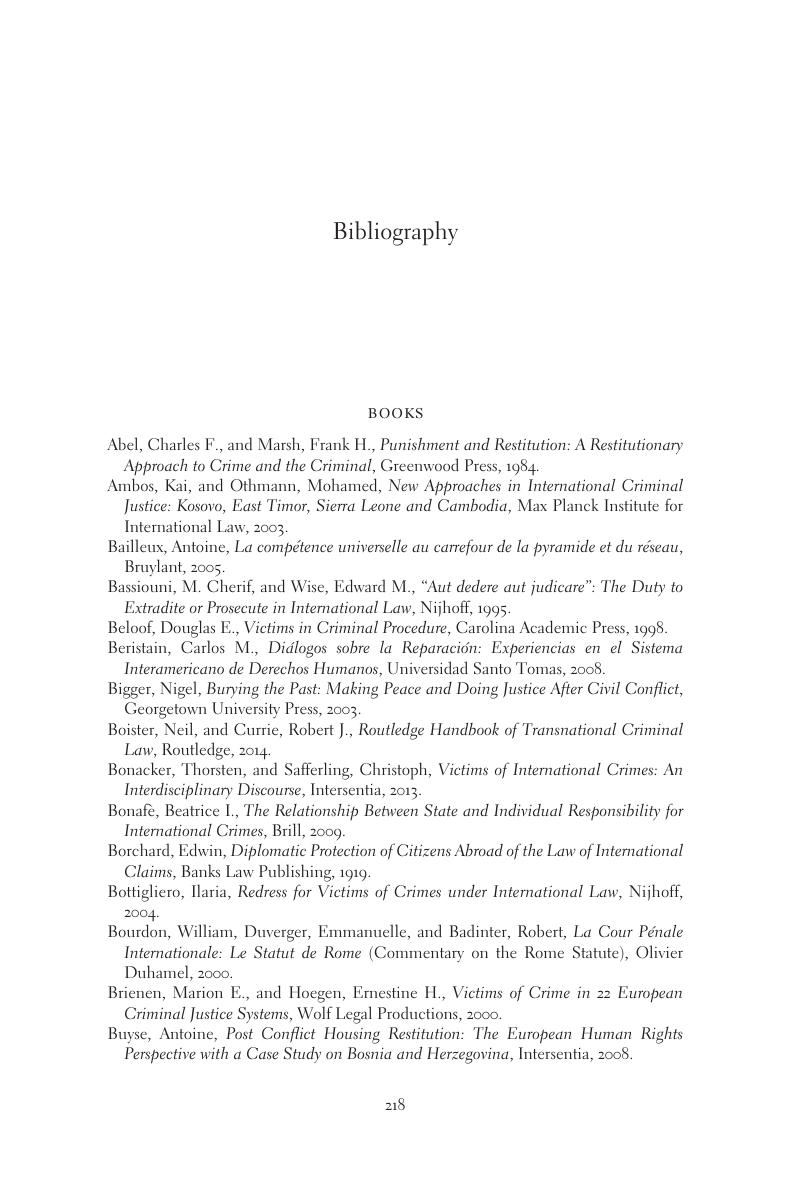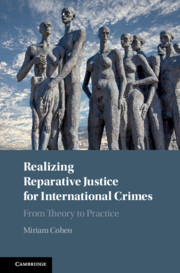Book contents
- Realizing Reparative Justice for International Crimes: From Theory to Practice
- Realizing Reparative Justice for International Crimes
- Copyright page
- Dedication
- Contents
- Foreword
- Acknowledgments
- Table of Cases
- Abbreviations
- Prologue
- Introduction
- 1 Punishment and Reparation
- 2 Reparative Justice at International and Hybrid Criminal Tribunals
- 3 The Construction of a Reparative Dimension of International Justice Before the International Criminal Court (ICC)
- 4 Victims of International Crimes Within Administrative Mechanisms
- 5 The Role of National Courts and Mechanisms in Realizing Reparative Justice for International Crimes
- 6 Conclusions
- Bibliography
- Index
- References
Bibliography
Published online by Cambridge University Press: 16 June 2020
- Realizing Reparative Justice for International Crimes: From Theory to Practice
- Realizing Reparative Justice for International Crimes
- Copyright page
- Dedication
- Contents
- Foreword
- Acknowledgments
- Table of Cases
- Abbreviations
- Prologue
- Introduction
- 1 Punishment and Reparation
- 2 Reparative Justice at International and Hybrid Criminal Tribunals
- 3 The Construction of a Reparative Dimension of International Justice Before the International Criminal Court (ICC)
- 4 Victims of International Crimes Within Administrative Mechanisms
- 5 The Role of National Courts and Mechanisms in Realizing Reparative Justice for International Crimes
- 6 Conclusions
- Bibliography
- Index
- References
Summary

- Type
- Chapter
- Information
- Realizing Reparative Justice for International CrimesFrom Theory to Practice, pp. 218 - 248Publisher: Cambridge University PressPrint publication year: 2020

